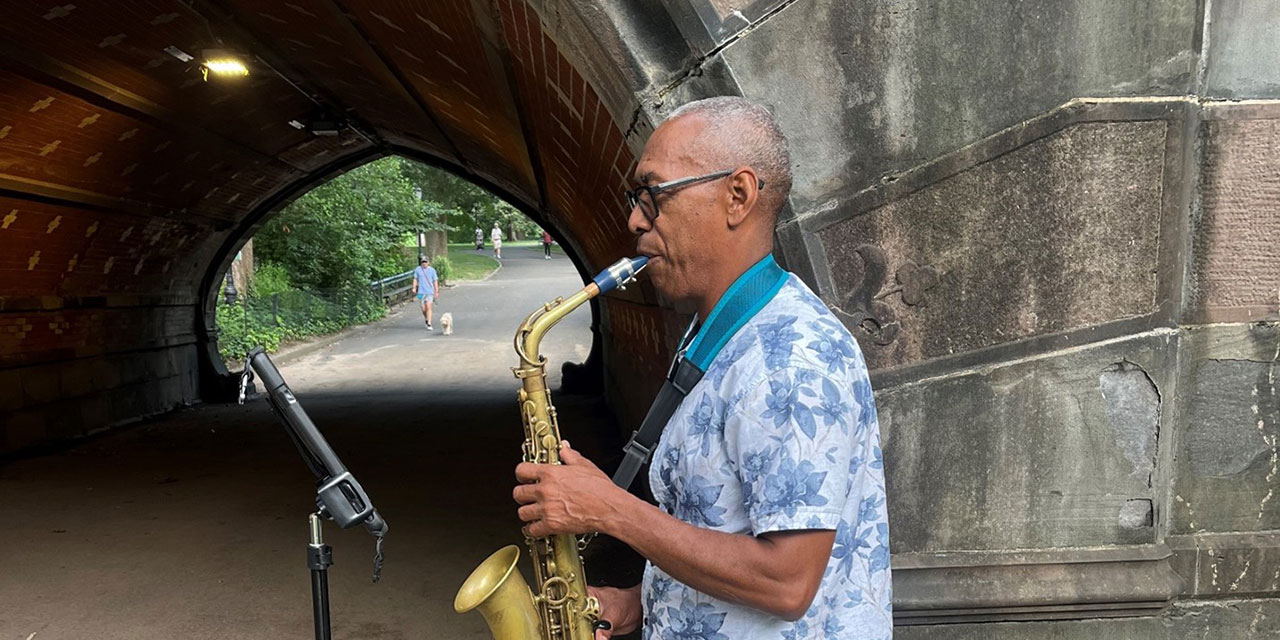New York’s bike-share program got off to a festive start on Memorial Day, with riders taking the blue bikes out for 6,050 spins amid light car and truck traffic and good weather. Bike share can be a success here, as it has been in Paris—as long as new cyclists aren’t complacent about safety.
Bike share works as follows: for $95 a year (or $10 daily), a New Yorker or tourist can rent one of 5,500 “Citibikes”—named after sponsor Citibank—from 330 bike-docking stations in Manhattan and Brooklyn (the number of bikes and stations will nearly double within a year). After a short trip, the cyclist docks the bike at another station. If riders rent each bike several times daily, they could increase Manhattan’s bicycle ridership by 50 percent and possibly much more.
Finally, a reason to check your email.
Sign up for our free newsletter today.
Despite fears to the contrary, especially among the elderly, bike share won’t harm pedestrians. New Yorkers’ visceral reactions to bicyclists come from encounters with aggressive deliverymen whipping around corners the wrong way (sometimes on illegally motorized two-wheelers) or with Lance Armstrong wannabes swearing at promenaders. But for nearly four years, no pedestrian has died underneath a bike in New York, while 597 have been killed by cars and trucks. Bicyclists make up 2.6 percent of the people who converge on Manhattan’s streets (not including subway or bus riders) on any given day. Yet cyclists cause less than a fraction of 1 percent of other people’s deaths. Nor is there evidence that bicyclists disproportionately injure others.
Bike share should improve these already healthy statistics, especially since the city is also enforcing new commercial-bicyclist rules. Food-delivery cyclists must wear helmets and bright vests marked with their restaurant’s name. Their conspicuousness already has improved their conduct, and thousands of amateur bicyclists will force them to behave even better. A food deliveryman can’t race the wrong way if it means running into French tourists on slow, heavy, three-speed Citibikes.
Bike share will also make both pedestrians and drivers more aware. If a male driver turning left—statistically, the deadliest threat—must slow down for a bicyclist, he’ll likely slow down for an elderly walker, too. More cycling leads to fewer injuries overall. In Paris, since bike share was introduced, all traffic deaths, whether of drivers or walkers, have fallen dramatically, from an average of 56 annually to 44 now. Injuries have fallen as well.
“We don’t anticipate issues with safety on the streets of New York,” Transportation Commissioner Janette Sadik-Khan said two weeks before the bike-share debut. Cycling is safer than ever before. In little more than a decade, as bicyclists’ numbers have quadrupled, annual deaths haven’t risen (the figure was 18 last year, including three in Manhattan). The death rate—or the expected number for a constant ridership level—has declined 73 percent. As more people take to the streets on two wheels, the per-capita death rate will decline further. New York drivers grow more accustomed to looking out for cyclists, just as they know (sort of) to look out for pedestrians. This “safety in numbers” maxim is why New York has many more walkers than most cities but a lower pedestrian death rate. Atlanta’s pedestrian death rate is three times New York’s.
There’s evidence, too, that bike share is safer than regular biking. Transport for London found that bike-share users’ serious-injury rate was one-third the rate of other cyclists in the city, with three serious injuries per 1 million rides. Drivers may see that bike-sharers aren’t professional cyclists and drive more carefully around them. Inexperienced riders are more cautious than the daredevil class. The bikes have safety features, including lights, and they’re heavy, discouraging speed and weaving.
If anyone should worry, it’s new bicyclists. Though more cycling makes the city safer, it doesn’t necessarily make the individual Citibiker safer. It depends what she was doing before, and where she bicycles (in a protected lane or amid motorized traffic). The safety-in-numbers phenomenon will protect those who were already riding bikes, but those choosing bikes to replace their subway trips or long walks—or even cab rides—will not be safer, at least initially.
Encouraging as its safety numbers have become, bicycling is disproportionately risky compared with other types of urban travel. Last year bicyclists, just 1 percent of the people coming into Manhattan, made up 6.5 percent of people killed in New York traffic crashes, exceeding, proportionally, the death rates of those commuting by subway or train. Riding a subway is one of the safest ways to travel. Subway riders make up more than half of commuters into Manhattan, but only 10 percent of deaths (not including subway suicides, most stem from accidental falls). Yet of four bikeshare users I interviewed Thursday outside Grand Central Terminal, two had signed up for the program to replace the subway commute that they had previously done after taking Metro-North into Manhattan, and a third said that he, too, would ride Citibike rather than take subway trains to his Manhattan sales meetings. (The fourth said that she would use Citibike rather than riding her own bike, as she had previously done.)
It’s true that London, Washington, and Boston have all had bike share for years, with no deaths (though London had a critical injury in April). But Boston and Washington have only a fraction of Manhattan’s population density. The core of London, too, is less dense than Manhattan. The best standard of comparison is with the City of Light. As New York’s Department of Transportation said in a bike-share study, “The population density of New York’s medium- and high-density areas—including parts of Brooklyn, where bikeshare will be—is virtually identical to Paris.” Paris’s bike-share usage is off the charts: compare its 27.5 million first-year rides with London’s 6 million, Washington’s million, or Boston’s half-million. Indeed, even before bike share launched, New York signed up more annual members—10,000—than the city of Boston has attracted in two years.
If New York’s bike-share program looks more like Paris’s, though, New York has some cause for worry. To be sure, bike share in Paris, or “Velib,” has been a wild success since its summer 2007 launch. One key sign: women (including me) use the scheme as much as men (in London, I’m comfortable cycling only in the park). “Velib”-ing in Paris has become a daily transportation option. People arrive for dinner or a movie having done something other than sit on a sweltering subway (no air-conditioning) or in a cab. Velibing is fun.
But Velib had a gruesome rollout. Despite a public-relations safety campaign, seven people died during Velib’s first three years, including three in the first year. Thanks to Velib, the average number of bike deaths in Paris initially doubled, from fewer than three people annually between 2004 and 2006 to nearly six deaths annually between 2007 and 2009. The equivalent in New York, even if one assumes an increase only in Manhattan (some docking stations are in Brooklyn), would be at least six deaths beyond the usual expected by the end of 2015. And while the cycling injury rate fell in Paris, the number of injuries increased, with bicycling up 70 percent and bicycling injuries up 35 percent. In 2010, a woman five months pregnant was seriously hurt.
Since 2007, Paris has stepped up its public-awareness campaign, and people have absorbed the safety lessons (tabloid attention to the crashes has helped as well). Nearly all the early Velib deaths involved a truck or bus, with many of these large, heavy vehicles making a blind right turn (angle mort). Bicyclists now know, thanks in part to updated instructions on each rental bike, that turning truck drivers will not see them. Furthermore, the city has punished negligent drivers. On many avenues, too, buses and bicyclists share super-wide segregated lanes, with professional bus drivers receiving training about bicyclist safety. The number of deaths has fallen back to just more than two annually, or about half New York’s rate adjusted for Paris’s smaller population. In 2010, two people died on bicycles in Paris. In 2011, no one did (though an eighth Velib customer died last fall, along with four other bicyclists last year, for a total of five, illustrating the volatility of annual numbers).
New York may be different. Unlike Paris, where Velibers ride in traffic, New York has built protected bike lanes on some major thoroughfares. The lanes around Midtown, particularly on Eighth and Ninth Avenues, already see considerable bike traffic. Further, many bike-share users will be veterans of European cities’ programs. New York’s program will grow more slowly than Paris’s did, giving drivers more time to grow accustomed to the new riders.
Still, New York can learn from Paris’s deaths. The city is counseling people to use bike lanes whenever possible, and city workers will give safety instructions to cyclists, though these focus largely on pedestrian safety (“yield to pedestrians” and “stay off the sidewalk”). Eric Britton, an American cycling enthusiast who has lived in Paris for four decades, suggests that city workers or cycling advocates stand at each docking station, at least in the first weeks or months, to make Citibikers aware of the dangers they face—from turning garbage-truck drivers to taxi passengers opening doors. “Urban cycling is not for the timid,” Britton says.
The city must also ask itself whether it’s done everything to calm traffic before bike share. New York needs more protected bike lanes, including on busy Fifth and Sixth Avenues. The city also needs to control its speeding cars and trucks. Speed is the biggest street killer. Yet the New York Police Department gave out 7 percent fewer speeding tickets last year than in 2011. And because of police-union opposition, the administration failed this year to get Albany to approve speed cameras, which would have reduced the number of cops needed to enforce traffic laws. The police and independently elected prosecutors and lawmakers remain reluctant to investigate, charge, and prosecute drivers who kill, and juries remain reluctant to convict.
Advocates figure that more cyclists will exert political pressure to change the safety culture in New York. Meanwhile, new cyclists should understand that for public health, bicycling is collectively beneficial. But as an individual commuting choice, switching from the subway to a bike adds danger, at least until experience allows the death rate to fall faster than the rate by which the number of new cyclists increases.



